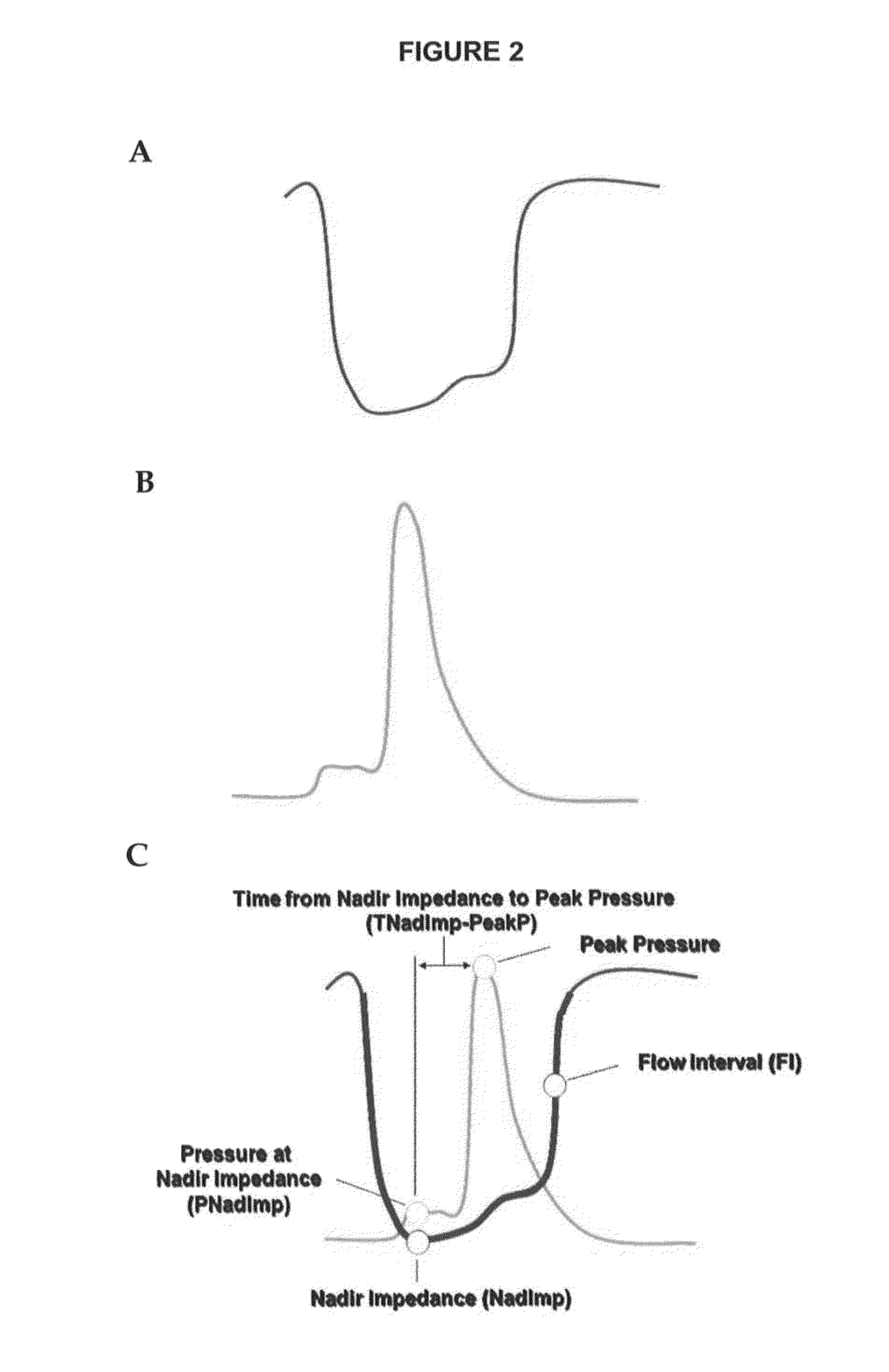Swallowing motor function measurement and assessment tools, methods, and apparatus
a motor function and measurement and assessment technology, applied in the field of swallowing motor function measurement and assessment tools, methods, and apparatuses, can solve the problems of weakened muscles, ineffective swallowing, and difficulty in swallowing, and achieve the effects of reducing the number of swallowing
- Summary
- Abstract
- Description
- Claims
- Application Information
AI Technical Summary
Benefits of technology
Problems solved by technology
Method used
Image
Examples
example 1
Assessment of Pharyngeal Motor Function Relevant to Aspiration—Adults
[0172]The aim of this study was to develop a new approach for the objective assessment of pharyngeal mechanical function relevant to aspiration. This used high resolution intraluminal manometry combined with impedance measurement (herein referred to as manometry and impedance). These data were explored for criteria that would enable recognition of individuals at high risk for clinically significant aspiration, without performance of fluoroscopy.
[0173]Methods
Subjects
[0174]Twenty subjects (13 male, mean 68.2 years, range 30-95 yrs.) were studied. These subjects had been referred to a swallowing clinic for a videomanometric study of the pharynx and esophagus because of clinical suspicion of deglutitive aspiration due to a deglutition disorder. Underlying diseases / conditions were identified through a review of medical records. The majority of subjects had a history of neurological disease or neurosurgery (FIG. 1). For ...
example 2
Assessment of Pharyngeal Motor Function Relevant to Aspiration—Children
[0217]The aim of this study was to apply the approach developed in Example 1, i.e. the use of high resolution intraluminal manometry combined with impedance measurement, for the objective assessment of pharyngeal function relevant to aspiration in infants and children. This approach was evaluated to determine if it enables recognition of pediatric patients at high risk for clinically significant aspiration, without performance of fluoroscopy.
[0218]Methods
Subjects
[0219]Eleven pediatric dysphagic patients (mean 6 years, range 5 months-13.4 years) were referred for a videomanometry study of the pharynx and esophagus. Underlying diseases / conditions were identified through a review of medical records. The majority of patients had a neurological history (FIG. 9).
[0220]Measurement Technique
[0221]All fluoroscopy studies were performed in the Pediatric Radiology Department, University Hospitals Leuven. Studies were perfor...
example 3
Assessment of Pharyngeal Motor Function Relevant to Post-Swallow Bolus Residue
[0234]The aim of this study was to apply the approach developed in Example 1, i.e. the use of high resolution intraluminal manometry combined with impedance measurement, for the objective assessment of pharyngeal function relevant to post-swallow bolus residue. This approach was evaluated to determine if it enables recognition of subjects with swallowing dysfunction causing bolus residue, without performance of fluoroscopy.
[0235]Methods
Subjects
[0236]23 dysphagic patients (17 adults, 6 children, 14 males, mean age 55 years, age range 2-95 years) were referred to the pediatric and adult swallowing clinics for a videomanometry study of the pharynx and esophagus. Underlying diseases / conditions were identified through a review of medical records. Sixteen patients had a neurological history comprising 7 adults with stroke, 4 children with cerebral palsy, 2 adults with Parkinson's disease, 2 adults with dementia ...
PUM
 Login to View More
Login to View More Abstract
Description
Claims
Application Information
 Login to View More
Login to View More - R&D
- Intellectual Property
- Life Sciences
- Materials
- Tech Scout
- Unparalleled Data Quality
- Higher Quality Content
- 60% Fewer Hallucinations
Browse by: Latest US Patents, China's latest patents, Technical Efficacy Thesaurus, Application Domain, Technology Topic, Popular Technical Reports.
© 2025 PatSnap. All rights reserved.Legal|Privacy policy|Modern Slavery Act Transparency Statement|Sitemap|About US| Contact US: help@patsnap.com



